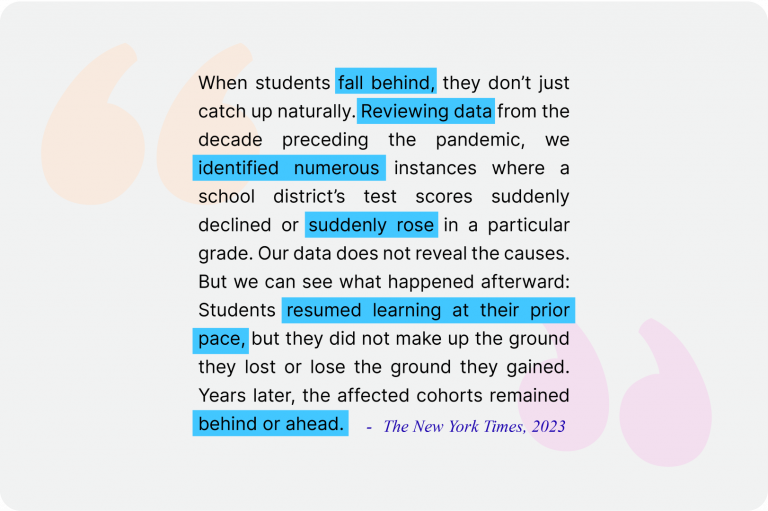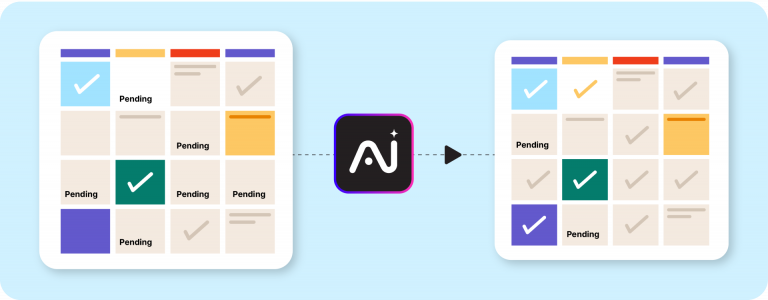When student academic performance in your institution hits a plateau, it’s natural to wonder what’s going wrong. You might see students falling behind, struggling to keep up, or simply not making the progress you expect.
The truth is that students face challenges—both inside and outside the classroom—that could be impacting their performance. Here, AI steps in: Artificial Intelligence is revolutionizing education by addressing many educational challenges, personalizing the learning experience, and providing previously unimaginable solutions.
In ‘Artificial intelligence in education: A systematic literature review’, experts have suggested some AI-powered learning management systems (LMS), such as Classe365, Absorb LMS, and Docebo that deliver multiple AI capabilities to support teaching and learning activities.
In this blog, I’ll walk you through 10 reasons why student performance may be stagnating in your institution, and how AI can play a key role in helping overcome these hurdles.
1. Personalization of Learning Is Lacking
One of the biggest problems students face is a lack of tailored learning experiences. Every student learns differently, but traditional classrooms often take a one-size-fits-all approach. This leads to poor academic performance, as students either fall behind or become bored because the material doesn’t match their pace.
AI has the potential to transform this by offering personalized learning plans. AI systems can track student progress, identify areas of weakness, and offer tailored exercises to help each student improve. With the help of AI, student academic performance can improve significantly because the learning experience becomes uniquely designed to meet their individual needs. These time-tested teaching techniques have come to its on-point implementation through AI.
2. Difficulty Identifying Learning Gaps
Another challenge for students is that they often don’t realize they have learning gaps until it’s too late. When these gaps go unnoticed, they accumulate, leading to poor academic performance. Teachers, too, can struggle to pinpoint exactly where a student is falling behind, especially in large classrooms.

AI tools can automatically detect these gaps early on. By analyzing data from quizzes, tests, and homework, AI systems can spot patterns and recommend interventions before these issues become major problems. This allows teachers to address specific problems students face in real-time, significantly boosting student academic performance. AI-integrated LMS platforms can tell you ‘How this semester’s average grade compares to the previous semester.’ or ‘Which questions were most frequently answered incorrectly in the latest assessment?’ with a few clicks.
3. Overloaded Teachers Can’t Offer Enough One-on-One Time
In many institutions, one of the primary educational challenges is that teachers simply don’t have enough time to give each student individualized attention. This lack of one-on-one interaction is one of the key challenges for students, especially those who need extra help to grasp difficult concepts.
AI-powered virtual tutors can fill this gap. These systems can provide 24/7 support, answering student questions, guiding them through assignments, and offering explanations whenever they’re stuck. By supplementing the teacher’s efforts, AI helps ensure that no student is left behind, improving overall academic performance and reducing the number of students struggling with poor academic performance.
4. Students Face Motivation and Engagement Issues
In this age of instant gratification, engaging and motivating students is a challenge without adequate tech support. Therefore, student engagement and motivation is a constant challenge in many institutions. Students feel disengaged or unchallenged in class. Over time, this disengagement leads to poor academic performance as students lose interest in learning.
AI can help reignite that motivation by making learning more engaging. Gamified learning platforms powered by AI can turn lessons into interactive experiences. AI can also tailor challenges and rewards to individual students, keeping them engaged and motivated. These platforms adapt to the learner’s needs, keeping them on track and helping improve student academic performance by fostering a more engaging learning environment.
5. Students Struggle with Time Management

Poor time management is another challenge for students, especially when juggling multiple subjects, extracurricular activities, and personal responsibilities. This often results in cramming for exams, incomplete assignments, and ultimately poor academic performance.
AI can step in here with smart scheduling and productivity tools. These tools analyze a student’s workload, priorities, and deadlines, and then create optimized study schedules to help them stay on top of everything. By helping students manage their time more effectively, AI can alleviate one of the major problems students face, leading to better academic outcomes. Southern New Hampshire University recommends their students use spreadsheet tools like Excel or Google Sheets to organize their projects or assignments, and then use a calendar app to remember important deadlines. AI-powered LMSes automate the process of better integrating all these apps.
6. Standardized Testing Doesn’t Reflect Real Progress
One of the most frustrating educational challenges is that standardized tests often don’t reflect the true capabilities of students. Many students experience test anxiety or simply don’t perform well in high-pressure situations, leading to poor academic performance, even when they’ve mastered the material.
AI is helping change how we assess student performance. Adaptive assessments powered by AI adjust their difficulty based on how the student is doing in real-time. This provides a much more accurate reflection of student academic performance, as it takes into account both strengths and weaknesses. These adaptive systems also offer immediate feedback, so students can learn from their mistakes and improve more quickly.
7. Socioeconomic Factors Create Barriers to Learning
We can’t overlook the challenges that students face outside the classroom. Socioeconomic factors, such as a lack of access to resources or even a stable internet connection, can severely impact student academic performance. These are problems students face that often go unnoticed by educators, but they can have a significant effect on their ability to keep up in school.
AI can help bridge this gap. For instance, AI-powered educational platforms that work offline can provide students with learning materials even in areas with poor connectivity. Additionally, AI can help educators identify which students are struggling due to external factors, allowing for targeted interventions that address these specific challenges for students.
8. Learning Disabilities Go Unnoticed
One of the more hidden challenges that students face is learning disabilities that aren’t diagnosed early enough. This can lead to years of frustration, low self-esteem, and ultimately poor academic performance as students struggle without understanding why.
AI is becoming an invaluable tool for detecting learning disabilities. Through constant monitoring and analysis of student behavior, AI systems can flag patterns that might indicate issues such as dyslexia or ADHD. This allows for early diagnosis and targeted support, which can vastly improve student academic performance and help overcome these educational challenges.
9. Too Much Information, Not Enough Comprehension
In today’s digital age, students are bombarded with information from all directions. However, one of the challenges for students is that they often struggle to sift through this overload and focus on what’s important. Without proper comprehension, it’s easy for them to fall behind, leading to poor academic performance.
AI can help students focus on what matters by filtering and organizing information more effectively. Intelligent recommendation systems can guide students toward the most relevant learning materials based on their progress and needs. These systems also encourage deeper comprehension by providing quizzes, summaries, and explanations tailored to each student’s understanding.
10. Stress and Mental Health Issues Go Unaddressed
Finally, one of the most significant problems students face is the toll that stress and mental health issues take on their performance. Many educational challenges stem from students dealing with anxiety, depression, or burnout, which can severely impact their ability to focus and learn.
AI-driven mental health support tools are becoming increasingly common in educational settings. These systems can monitor student behavior for signs of stress or anxiety, providing real-time alerts to educators and suggesting interventions. AI-powered chatbots and apps can also offer mental health support directly to students, providing resources to help them cope with the challenges they face. By addressing the mental health aspect, AI can play a key role in preventing poor academic performance.
AI isn’t just a futuristic idea; it’s already playing a vital role in transforming education and addressing the many challenges that students face. By personalizing learning, identifying problems early, and providing constant support, AI helps boost student academic performance in ways we never thought possible. While educational challenges will always exist, the tools we have at our disposal are evolving, and AI is leading the charge in helping students overcome them.
Whether it’s dealing with poor academic performance, the educational challenges posed by large class sizes, or the more personal problems students face, AI offers innovative solutions that make a real difference. By integrating AI into the classroom, we can help every student reach their full potential and break through the barriers holding them back.
This isn’t just the future of education—it’s the present, and the results are promising. So, what’s stopping you from using AI to its fullest to solve the problems students face? The potential is there, and it’s time you fully embrace it for the benefit of your students.
